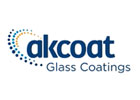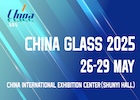HarbisonWalker International (HWI) manufactures a variety of mortars for a wide range of applications, service conditions, and purposes.
All major chemistry types are represented, as well as bond types and shipping condition options. HWI's mortars have been developed to meet specific service conditions and to serve several purposes. These functions include bonding the brickwork for structural strength to reduce chemical attack from corrosive slags or gases, and to match the properties of the brick with which they are used.
Purpose of Mortar >
- Fill joints, bond individual bricks together, and even out irregularities of brick face
- Correct for imperfections in steel shell when laying up brick
- Protect joints from attack by slag or other fluxes
- To limit the passage of gases through the refractory structure
- Provide a protective coating for patching and brushing
- Not intended to strengthen lining in most applications
Choosing a Mortar >
- Match or exceed brick chemistry/quality
- Account for service conditions
- Bond type consideration
- Desired consistency (depends on application)
- Wet vs. Dry packaging
Bond Technology
Selecting a bond type is a critical decision when choosing a mortar. HarbisonWalker
International’s products offer three bonding options >
AIR-SET BOND
Takes a rigid set when dried over 110°C. Air-setting mortars help maintain the strength of the bond up to the temperature at which the ceramic bond takes effect.
- Sodium silicate
- Forms a strong bond when heated above 100°C
Consideration:
Water soluble until over 343°C
HEAT-SET BOND
Develops a ceramic set with a strong bond only at high furnace temperatures. These mortars offer expansion flexibility during initial heating.
- Forms a ceramic bond at high temperatures. No bond is formed until the product reaches above 1315°C to fuse particles
- Allows brick to expand at high temperatures before the mortar gains max strength
PHOSPHATE BOND
Often grouped with heat-setting mortars, but these mortars see a chemical reaction occur at lower temperatures (260°- 316°C) between the phosphoric acid and ceramic oxides. This reaction imparts high strength to the mortar joint and usually offers the best resistance to severe slag attack.
- Will develop a strong chemical bond above 343°C
- Some expansion will be taken up by the mortar joint, but nothing after chemical bond is formed.
Considerations:
Phosphate can be detrimental to the process
Water soluble until over 343°C



























